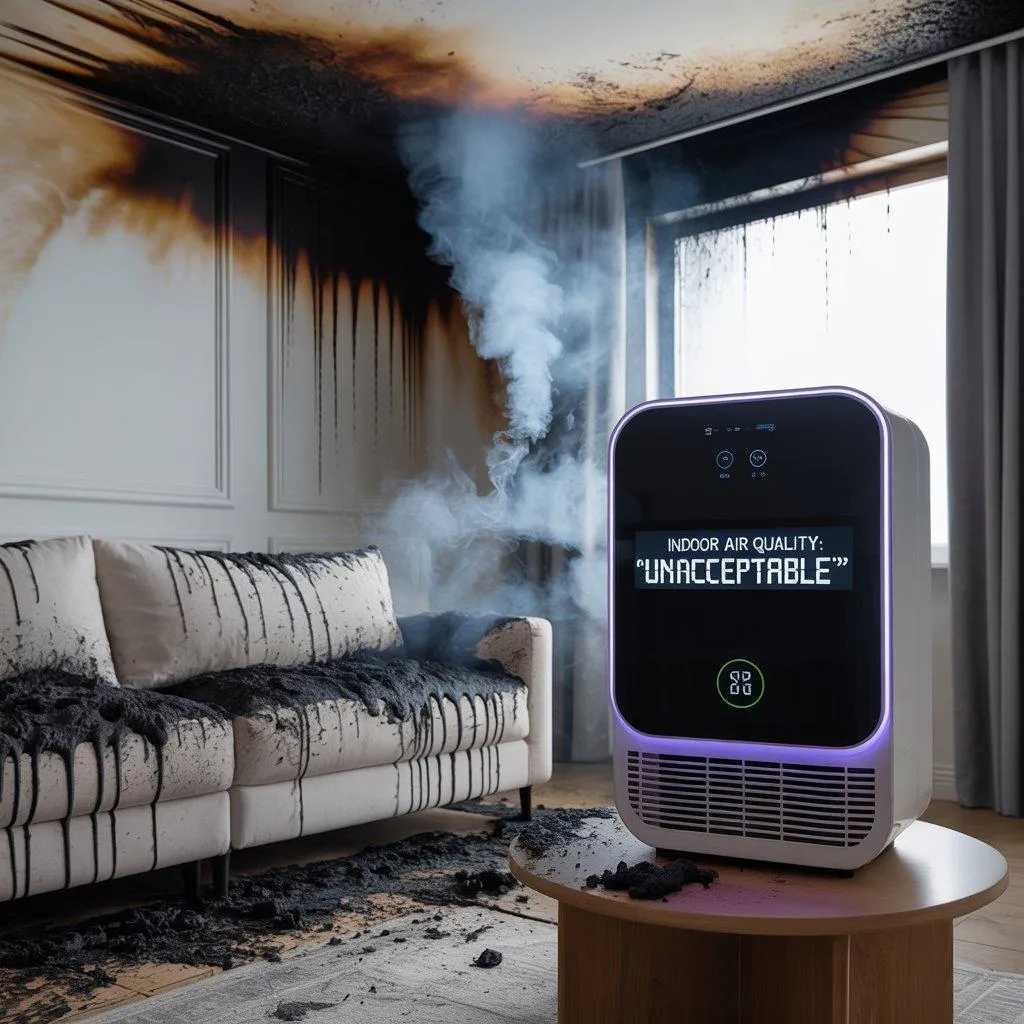Restoration Blog
Restore

The Impact of Smoke Damage
The Impact of Smoke Damage on Indoor Air Quality
Smoke damage can have a lasting effect on the indoor air quality of St. Louis homes. After a fire, airborne particles and toxic chemicals can linger, affecting both health and comfort. Understanding how smoke damage impacts indoor air quality and the steps to mitigate its effects is essential for maintaining a safe and healthy living environment.
1. How Smoke Damage Affects Indoor Air Quality
[Image Suggestion: Image of smoke filling a home interior or showing smoke damage on walls/ceilings.]
Smoke from fires contains a mix of harmful particles, including carbon monoxide, carbon dioxide, soot, and volatile organic compounds (VOCs). These contaminants can seep into walls, furniture, and HVAC systems, compromising air quality long after the fire is extinguished. Common effects include:
Respiratory Issues: Smoke particles can irritate the respiratory system, leading to coughing, shortness of breath, and aggravating asthma and allergies.
Odor and Residue: Lingering smoke odors and soot deposits can create an unpleasant living environment.
Chemical Exposure: Toxic chemicals from burned materials can pose long-term health risks if not properly removed.
2. Key Areas Affected by Smoke Damage
[Image Suggestion: Diagram or labeled photo showing rooms and areas where smoke damage typically occurs — walls, ceilings, furniture, HVAC systems.]
Walls and Ceilings: Smoke can penetrate porous materials like drywall, leaving behind stains and odors.
Furniture and Fabrics: Upholstery, carpets, and curtains can absorb smoke particles, impacting both air quality and aesthetics.
HVAC Systems: Smoke can infiltrate ventilation systems, spreading contaminants throughout the home.
3. Steps to Improve Indoor Air Quality After Smoke Damage
[Image Suggestion: Infographic listing steps for smoke damage cleanup — ventilation, cleanup, air purifiers, odor removal, etc.]
Immediate Ventilation: Open windows and use fans to remove contaminated air and bring in fresh air.
Professional Smoke Damage Cleanup: Restoration experts in St. Louis use specialized equipment and techniques to remove smoke particles from surfaces and air ducts.
HVAC Inspection and Cleaning: Clean and replace air filters and have the HVAC system professionally inspected to prevent the circulation of contaminants.
Use Air Purifiers: HEPA air purifiers can help capture fine smoke particles, improving indoor air quality.
Odor Neutralization: Professional deodorization methods, such as ozone treatments and thermal fogging, can eliminate lingering smoke odors.
4. Long-Term Prevention Tips
[Image Suggestion: Image of a smoke detector being installed or a family practicing fire safety drills.]
Install Smoke Detectors: Ensure smoke detectors are installed and regularly tested throughout your home.
Maintain Fire Safety Practices: Keep flammable materials away from heat sources and have a fire extinguisher readily available.
Regular HVAC Maintenance: Schedule routine HVAC inspections and cleanings to prevent smoke particles from accumulating.
5. When to Seek Professional Help
[Image Suggestion: Photo of a professional smoke damage restoration team working in a home.]
If smoke damage is extensive, it’s crucial to contact a smoke damage restoration company in St. Louis. Professionals have the tools and expertise to thoroughly clean affected areas, remove odors, and restore indoor air quality. Delaying cleanup can result in long-term health risks and more extensive property damage.
Conclusion
[Image Suggestion: Happy family enjoying clean air inside their home after smoke damage restoration.]
The impact of smoke damage on indoor air quality can be significant, but with prompt action and professional restoration, St. Louis homeowners can create a safe and healthy living environment. By addressing smoke damage quickly and following proper cleanup procedures, you can protect your home and family from the harmful effects of smoke exposure.
